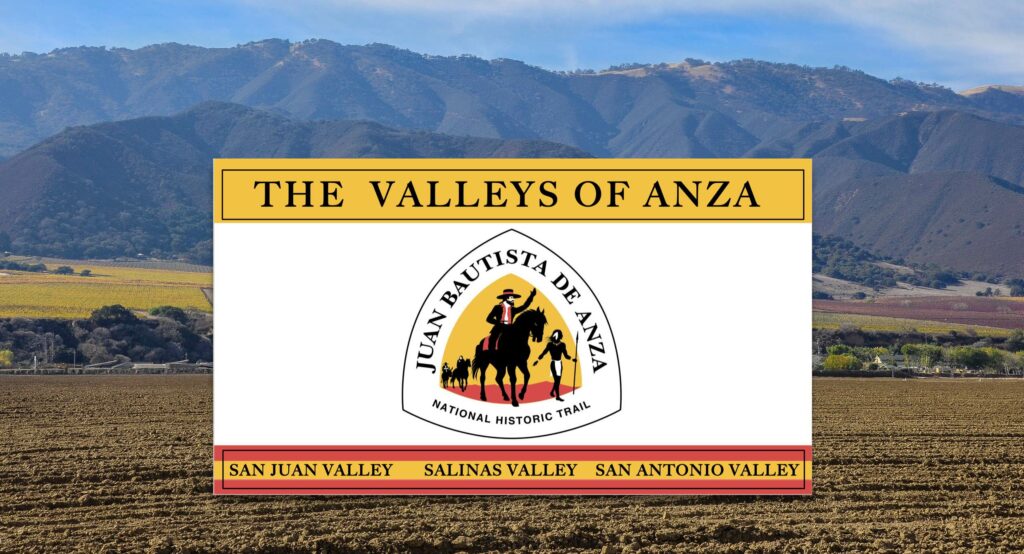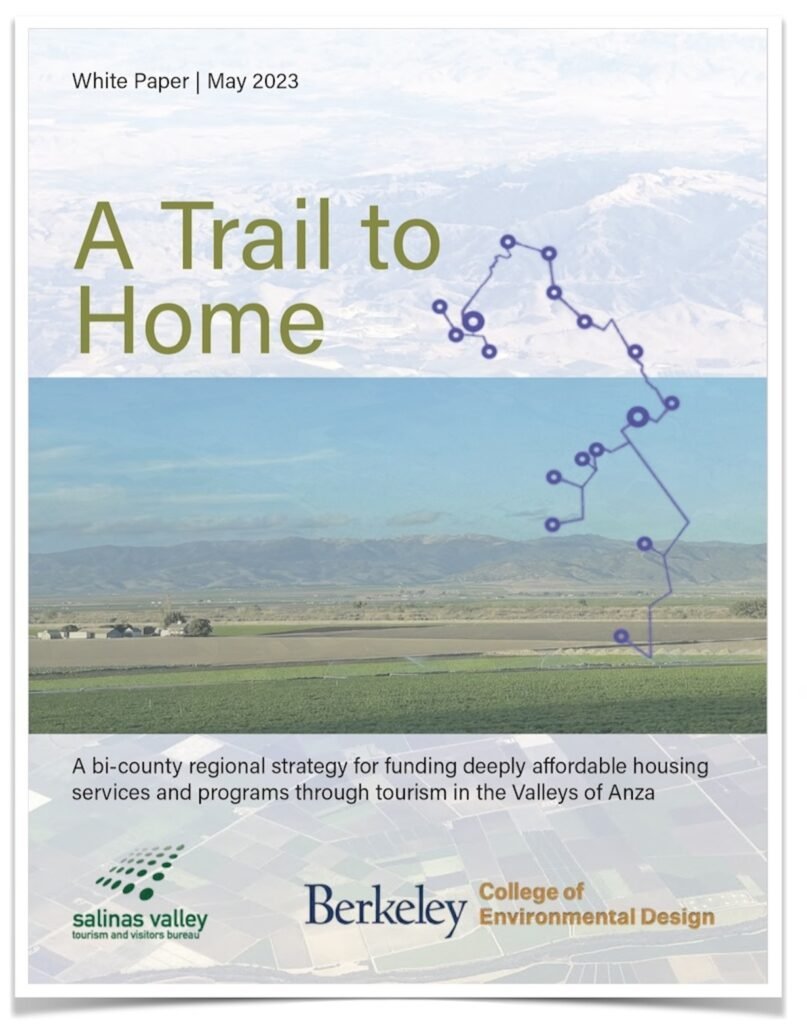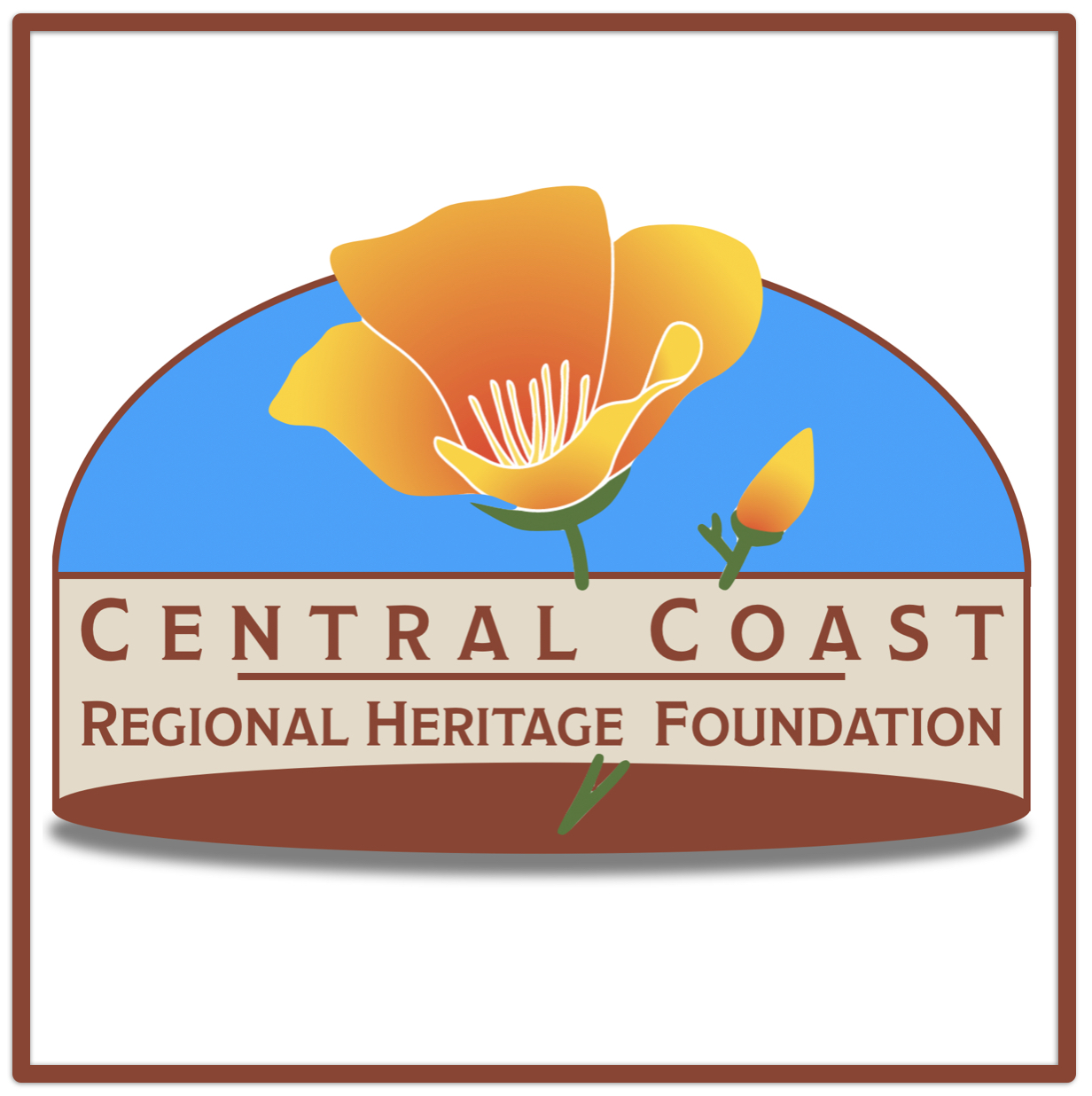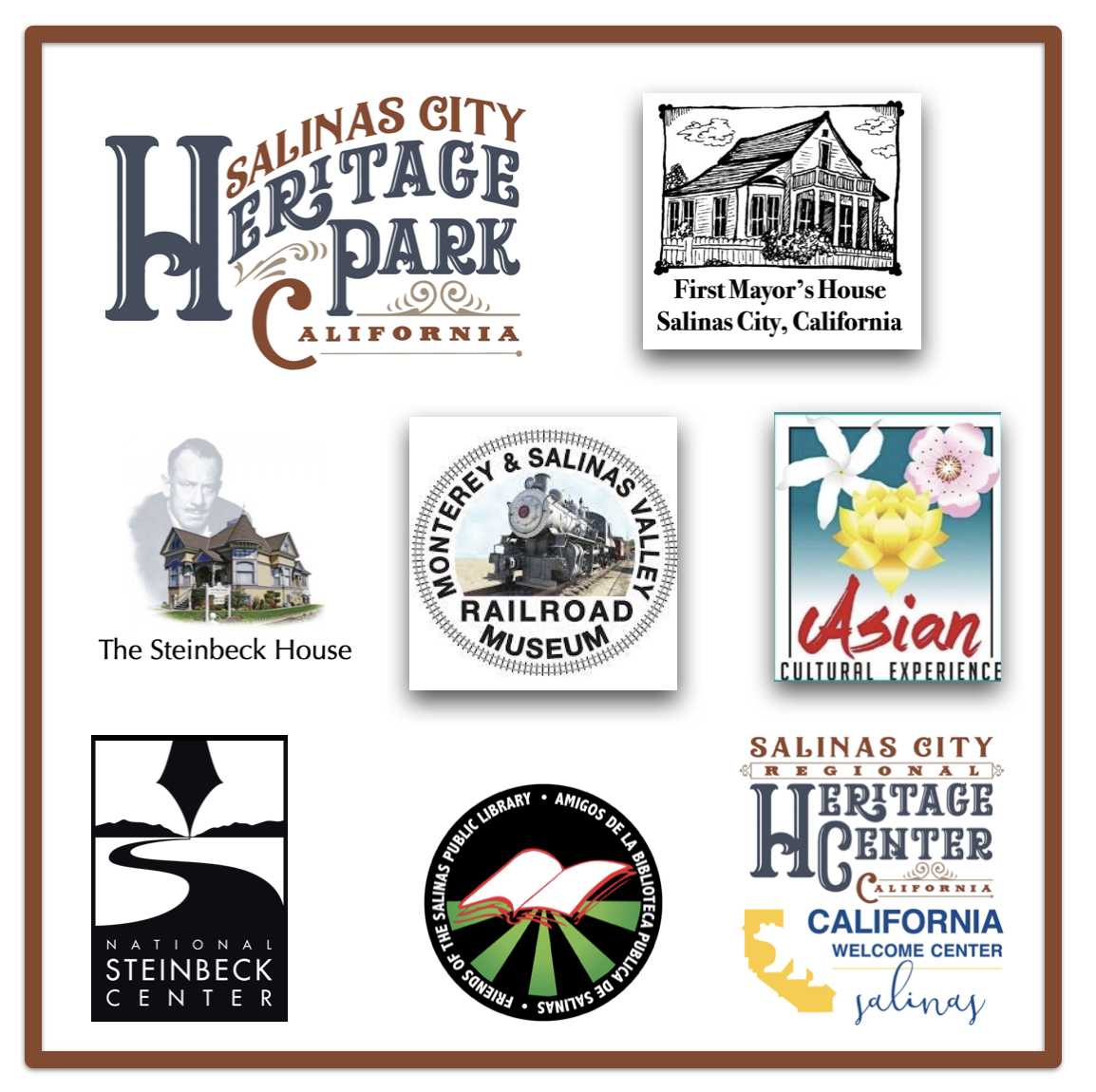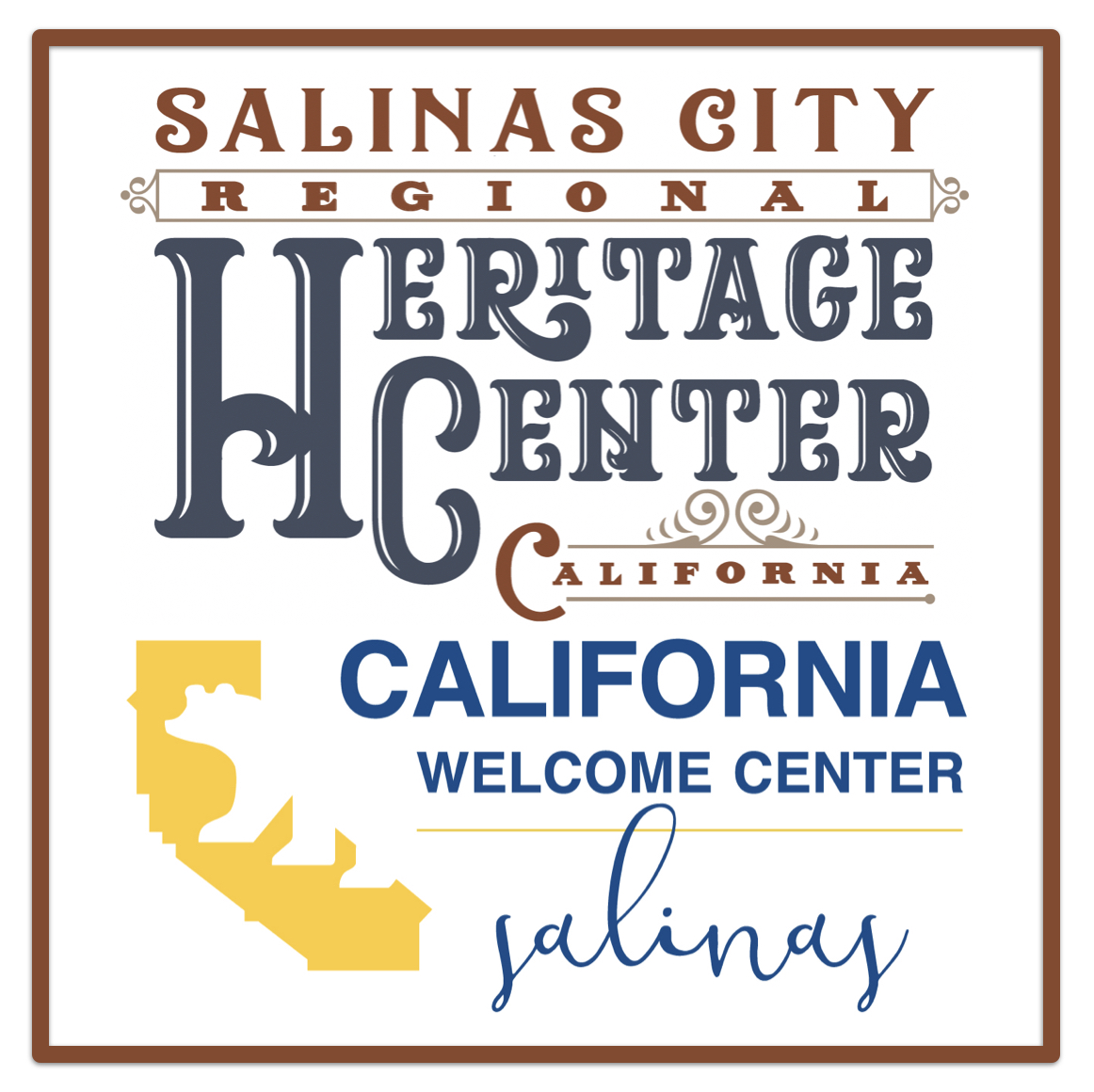Through the Contributions and Engagement of Our Community:
We create points of destinations that share our stories, honor the legacies of our diverse ancestors, and inspire new opportunities for economic growth through Regional Heritage Tourism.
An Alliance of Resources to Create a Point of Destination That:
Educates inspires and builds a strong economy through Regional Heritage Tourism.
The Housing-Tourism Nexus — White Paper: A Trail To Home
“A Trail To Home” is a bi-county regional strategy for funding deeply affordable housing services and programs through tourism in the Valleys of Anza by Allison Evans, PhD student in the Department of City & Regional Planning at the University of California, Berkeley.
A Brief Synopsis: Economic Development for Monterey and San Benito Counties Through Regional Heritage Tourism
The State of California is the most populous in the Nation and is about to become the fourth largest economy in the world – accomplished in a mere 173 years of existence. This period is a snap of the fingers when measured against the history of other countries, crossing over thousands of years. In many ways, California’s relatively short historical footprint is a “living and breathing history” that can be traced back to our particular region. These stories can be capitalized on to spread economic health to the region by introducing visitors to areas not currently developed as tourist destinations. The Valleys of Anza initiatives leverage the potential regional heritage tourism experience combined with two National Park Service assets — Pinnacles National Park and the Juan Bautista De Anza National Historic Trail.
The greater Monterey Bay region is an economic driver for tourism, especially along the coastline. Before COVID-19, Monterey County realized three billion dollars in economic lift, and Santa Cruz County hit the one billion mark just a few years ago. Within the next few years, that total of four billion in tourism dollars will again be realized, impacting the local coastal economies with a saturation point currently being felt by locals and tourists alike.
Over-tourism, harmful impacts on our natural resources, and negative experiences by locals and tourists alike have created specific pressure points in coastal communities. While these coastal cities benefit from overnight hotel stays and tourist spending, other inland nearby towns have not been able to gain the attention of these visitors. Unfortunately, lacking a cohesive narrative and branding has impeded these inland cities’ ability to attract Monterey Bay coastal tourists.
There is a story to tell, however, that could change this.
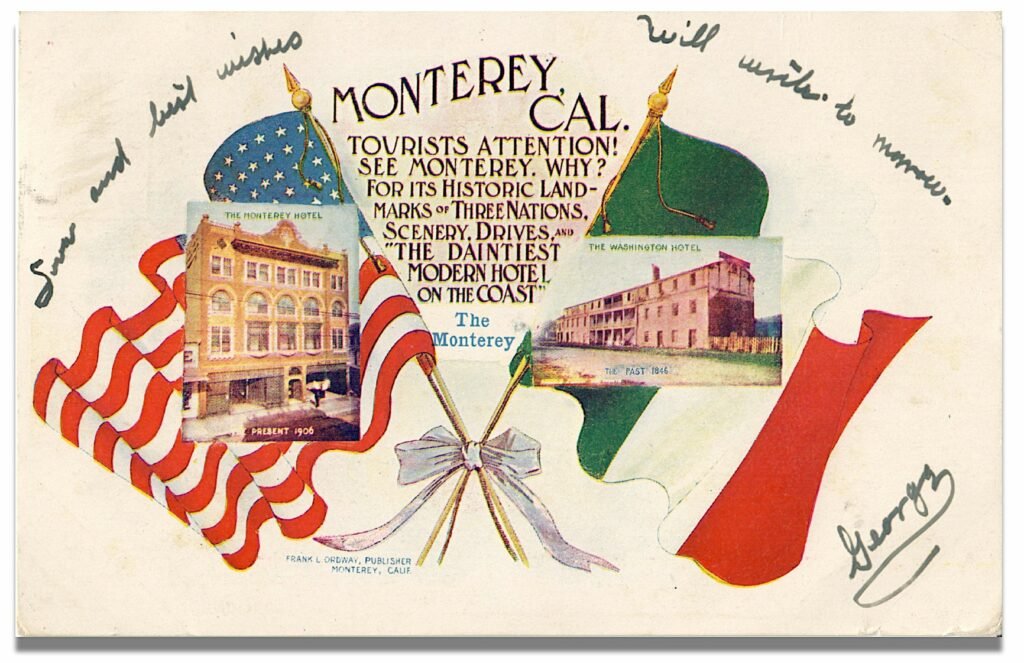
Natural Landscapes and Early Settlements Are Windows Into Early California, Alta California, New Spain and First Peoples
Our state history demonstrates that most valleys like the Salinas and San Juan, as well as San Fernando and Santa Clara, each, at a point in time, were primarily agricultural economies. The advantage that the Salinas and San Juan valleys share today is the unique distinction of not being developed beyond the initial primary use of agriculture. These two valleys are a window to our past, not just from a perspective of agriculture but also as areas that were pivotal to the formation of the State of California. Because these two valleys have been spared from significant development, they can be our future in tapping into the tourism flow successfully established along the coast.
The local, old town areas such as historic San Juan Bautista, downtown Hollister, Salinas City Center, Castroville, Soledad, King City, Greenfield, and Gonzales have, for the most part, not been cannibalized by modern construction and remain fundamentally the same as when the towns were founded. These “Main Streets” hearken back to bygone times in California’s history but now have the potential to become unique destinations in both valleys.
Absentee landlords are the biggest impediments to garnishing proper attention to these historic structures. To combat this, the Salinas City Center Improvement Association was established in 2015 when 217 property owners voted for its formation. It came with a significant annual assessment for implementing the City of Salinas Downtown Vibrancy Plan. This successful model could be implemented in other struggling historic downtowns.
The Central Coast — Santa Cruz, San Benito, and Monterey Counties — is also home to the most California Missions of any region. Five of the 21 are found in just these three counties alone. Mission San Antonio de Padua in the San Antonio Valley is the only mission still surrounded by its natural landscapes and was a major stop along the Anza Trail. The mission was only three years old when the expedition arrived.
San Juan and Salinas valleys also share unique access to Pinnacles National Park, two parks in one since a road does not connect the east and west entrances. The east side of the Park, where overnight camping is allowed, is usually booked with waiting lines that form at the entrance as visitors wait to get in. The west side of the Park is for day use only and sees about 1/3 of the total daily visitors. A one-way road limits buses and large RVs from navigating this entrance to the Park.
Besides sharing a national park for hiking and camping, the region also shares other trails. The Steinbeck Literary Trail traverses both Monterey and San Benito counties. John Steinbeck’s inspiration for his books and other writings and familial roots are located throughout both counties.
River Road Wine Trail in the Salinas Valley produces world-renowned wines, especially the varietal pinot noir, not to mention this scenic trail runs at the base of the Santa Lucia Highlands mountain range — a perfect location for a new outdoor attraction — a zip line. Zip Line & Wine could be another ideal pairing for locals and tourists. San Benito also has a budding wine trail outside the Hollister Hills State Vehicular Recreation Area.
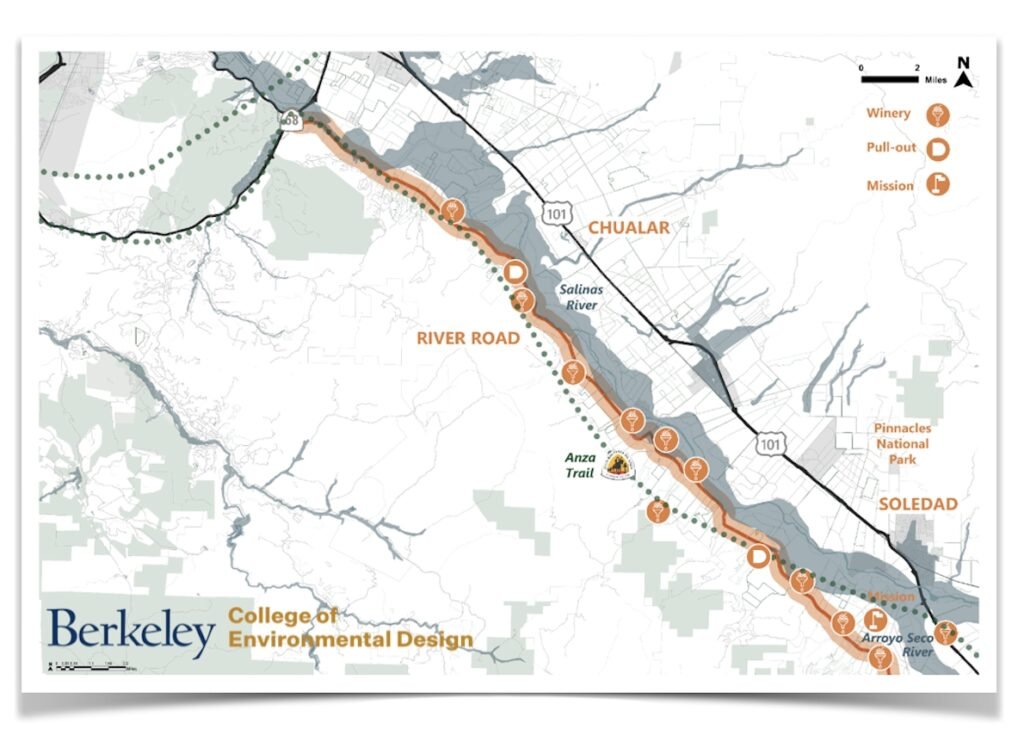 The Juan Bautista De Anza National Historic Trail
The Juan Bautista De Anza National Historic Trail
Our cultural and heritage history begins with the First Peoples and then transitions to European settlers from Spain, followed by Mexico’s control of Alta California. The early Spanish explorers forged the first trails through our region.
In 1775-76, Juan Bautista de Anza led more than 240 men, women, and children on an overland journey across the frontier of New Spain to settle Alta California. The trail is more than 1,200 miles, and the diaries kept by Anza and others detail the multi-ethnic expedition day by day.
The Anza Trail was designated a National Historic Trail by Congress in 1990 through an amendment to the National Trails System Act (16 U.S.C. 1241-51) and is an expedition that occurred in 1775-1776 with the intent to be the initial settlers of San Francisco. In our region from the south, this trail runs along the Salinas River in the Salinas Valley and traverses to Monterey then heads northeast through Salinas up to San Juan Bautista. There are currently only 20 National Historic Trails in the United States.
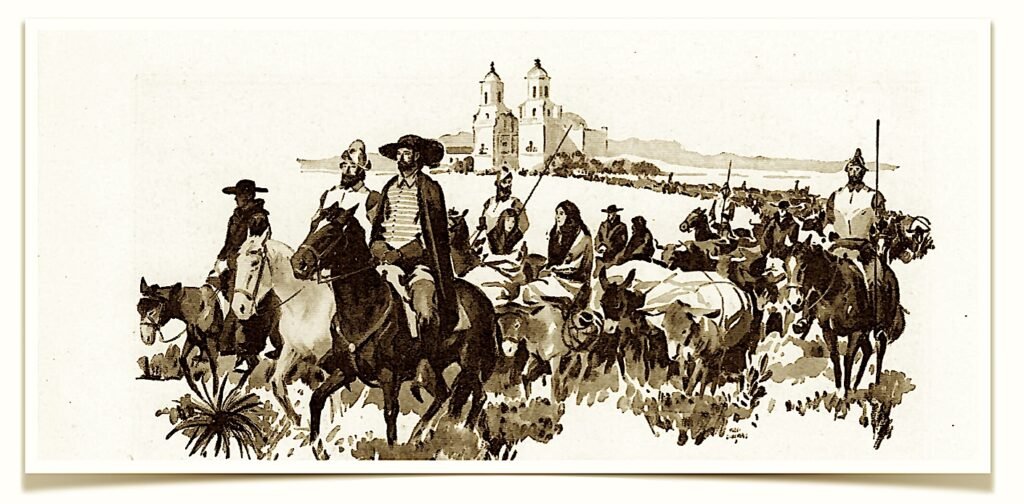 Connections To The Anza Trail
Connections To The Anza Trail
Two distinct county parks are very similar in their physical makeup. San Lorenzo County Park in King City and San Benito County Historic Park have historic buildings native to the area that have been moved and restored for viewing. Both parks are managed by their respective counties and are underutilized with increasing budgetary challenges.
Anza Trail in Monterey County: https://www.nps.gov/juba/learn/historyculture/california-anza-trail-sites.htm#CP_JUMP_767724
San Lorenzo County Park, King City:
The San Lorenzo County Park is a 200-acre site controlled by the County of Monterey. There are campsites and RV hook-ups. An agricultural museum, equipment, and the original King City train depot also reside there.
Aerial map of San Lorenzo County Park: https://www.co.monterey.ca.us/home/showdocument?id=72620
The expedition followed Sulphur Springs Canyon into Kent Canyon near King City. The camp was made north of King City at Los Ositos on the banks of the Salinas River (then called the Monterey River). Today, travelers can visit the Monterey County Agricultural & Rural Life Museum (1160 Broadway in King City) and learn how farming developed after the first settlers arrived.
San Benito County Historic Park, Tres Pinos:
Similar in function and historic buildings, the smaller overall size of the San Benito County Historic Park is also underfunded and lacks sufficient means of marketing or attracting potential tourists from the coast. This site is about 14 miles from the existing Anza Trail in San Juan Bautista. San Benito County Historical Park
Anza Trail in San Benito County: https://www.nps.gov/juba/learn/historyculture/california-anza-trail-sites.htm#CP_JUMP_767725
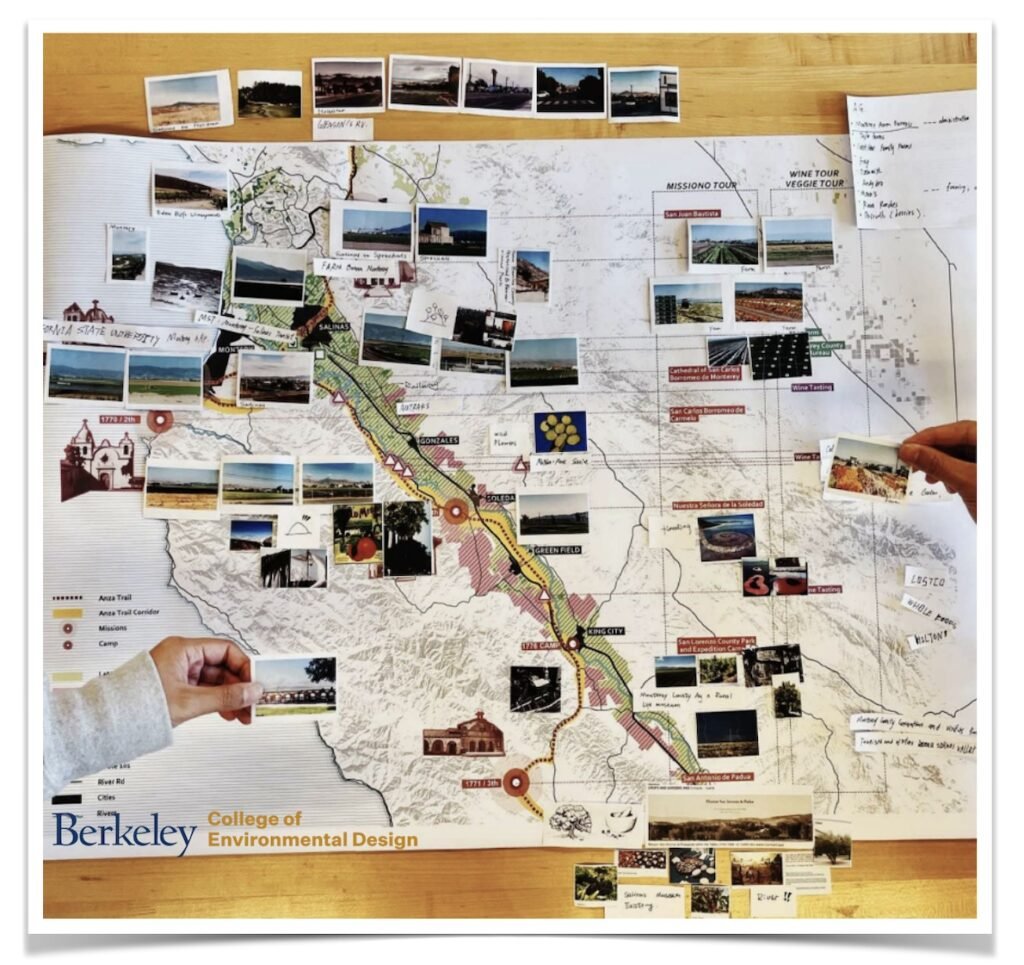 Creating Alternative Itineraries From The Coastline of Monterey Bay
Creating Alternative Itineraries From The Coastline of Monterey Bay
The Anza Trail within this region can be developed for an international audience. In 1775-1776, a moving town of 240 people with two births along the way and more than 1,000 head of cattle forging a trail to settle San Francisco was a positive demonstration of multicultural cooperation. The diaries of this expedition can be developed into educational narratives that begin to tell the story of how California became California. Because the trail in this part of California is not encumbered by (over)development, the experience of the trail and all the other trails mentioned in this brief can be marketed to the existing tourist population found already on the coastline.
The Valleys of Anza, heritage and cultural tourism, and supporting experiences such as agri-tourism and eco-tourism all fall under the authentic experience called experiential tourism.
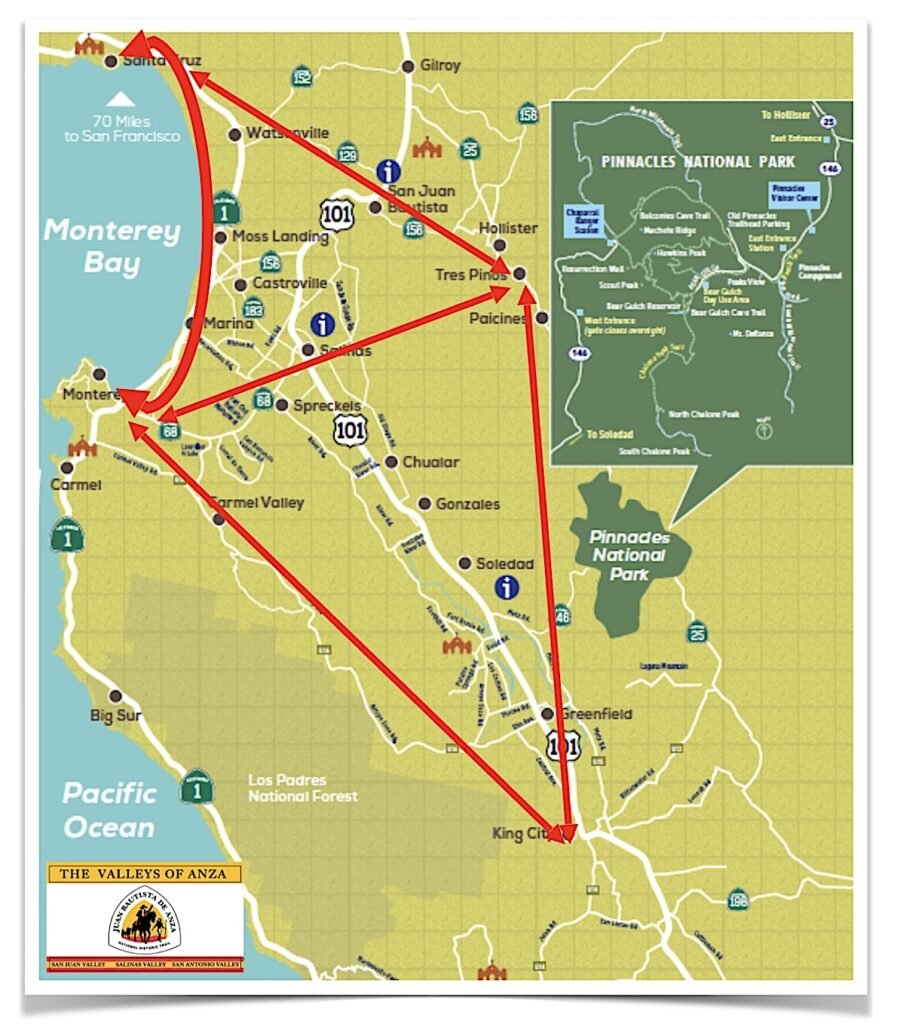 The initial infrastructure to accommodate bringing tourists inland can be tested using the two parks mentioned in this brief. Because of their existing infrastructure of historic buildings and their proximity to the Anza Trail, they can become additional points of destinations that create new overnight itineraries that “spread the wealth” from the coastal destinations of Santa Cruz and Monterey. Creating this flow of tourists to new itineraries, using five points (a geometric rhombus with an intersection) that include the cities of King City, Salinas, and Tres Pinos / San Juan Bautista, could potentially increase economic health for both counties.
The initial infrastructure to accommodate bringing tourists inland can be tested using the two parks mentioned in this brief. Because of their existing infrastructure of historic buildings and their proximity to the Anza Trail, they can become additional points of destinations that create new overnight itineraries that “spread the wealth” from the coastal destinations of Santa Cruz and Monterey. Creating this flow of tourists to new itineraries, using five points (a geometric rhombus with an intersection) that include the cities of King City, Salinas, and Tres Pinos / San Juan Bautista, could potentially increase economic health for both counties.
Presentations:
Thank you to the City of Salinas Historic Resource Board for hearing our presentation about the Valleys of Anza.
Partners:
Press:
June 6, 2023 — Monterey County Weekly Now; “Connecting the dots between tourism and housing.”
March 25, 2023 — Monterey Herald; “Heritage Park Group Seeks Voices of Support”
July/August 2022 — California Bountiful Magazine; “Long Cool Ride”



